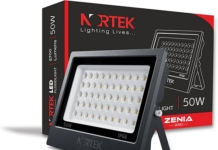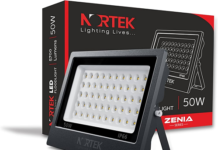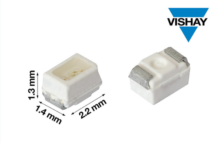
LED lighting has been a game-changer in the industrial sector, especially when it comes to safety. Proper lighting is essential in any industrial operation to prevent accidents, injuries, and even fatalities. LED lighting has proven to be a reliable and energy-efficient solution that can enhance safety in industrial facilities.
According to the National Institute for Occupational Safety and Health, poor lighting can lead to accidents and injuries in the workplace. LED lighting can provide visual clarity, alertness, and color rendering that can improve safety features in industrial facilities. It can also combat fatigue and improve productivity, especially for workers who work night shifts or rotating schedules.
LED lighting is also durable and has a long life, which can reduce maintenance costs and premature failure of equipment. Additionally, LED lighting is environmentally friendly and does not contain hazardous materials such as mercury, which is commonly found in fluorescent, high-pressure sodium, and metal halide lighting. With its crisp, clear lighting, LED lighting can improve visibility and reduce the risk of slip, trip, and fall hazards, making it an ideal upgrade for any industrial operation.
The Importance of LED Lighting in Industrial Facilities
LED lighting has become an increasingly popular choice for industrial facilities due to its numerous benefits. LED fixtures such as high bay overhead units can enhance safety, increase efficiency and productivity, and save costs.
Enhancing Safety
Safety is a top priority in any industrial operation. Poor lighting can lead to accidents, injuries, and even fatalities. LED lighting provides clear, crisp, and natural daylight, which enhances visual clarity and color perception. This helps workers spot hazards and stay out of harm’s way.
According to the National Institute for Occupational Safety and Health (NIOSH), slips, trips, and falls account for most industrial accidents, causing 15% of all accidental deaths, second only to motor vehicle accidents. LED fixtures offer better visibility that reduces the risk of slip, trip and fall hazards. LED lighting has also been proven to enhance trip-hazard detection by nearly 24 percent and allow staff to detect tripping hazards 94 percent faster than conventional lighting.
Increasing Efficiency and Productivity
LED lighting can increase efficiency and productivity in industrial facilities. LEDs are highly energy-efficient, using over 50% less energy than traditional lighting sources such as high-pressure sodium and metal halide. This can result in significant cost savings on energy bills.
LEDs can also combat fatigue and improve alertness. Fatigue is a major risk for workers, especially those who work night shift or a rotating schedule. LED lighting can provide a more natural and uniform light, which can help combat fatigue and improve alertness.
Cost Savings
LED lighting can provide significant cost savings for industrial facilities. LEDs have a long life and are highly durable, reducing the need for frequent maintenance and replacement. This can result in significant savings on maintenance costs.
LED lighting is also eligible for utility incentives and rebates, which can help offset the cost of installation. Additionally, LED lighting can provide a high return on investment (ROI) over time. ROI calculations should include energy savings, maintenance savings, and utility incentives processing.
In conclusion, LED lighting is an essential component in creating a safe and efficient working environment for industrial facilities. Upgrading to modern, energy-efficient LED lighting can enhance safety features, improve visual clarity, increase productivity, and save costs.
The Hazards of Poor Lighting in Industrial Facilities
Increased Risk of Accidents
Poor lighting in industrial facilities can increase the risk of accidents. Inadequate illumination can make it difficult for workers to see potential hazards, such as spills, trip and fall hazards, and contact with objects and equipment. This can lead to work-related injuries, fatalities, and even electrocution. According to the National Institute for Occupational Safety and Health (NIOSH), work-related injuries cost the U.S. economy billions of dollars annually.
Negative Impact on Workers’ Health and Productivity
Poor lighting can also have a negative impact on workers’ health and productivity. Inadequate illumination can cause eye strain, headaches, and fatigue, which can lead to decreased alertness and productivity. Workers may also experience stress and glare-induced headaches from too much lighting. The color rendering of the lighting can also impact workers’ ability to perform visual tasks with precision and accuracy.
Higher Maintenance Costs
Poor lighting can also lead to higher maintenance costs. HID lighting, such as high pressure sodium and metal halide, can have a shorter lifespan and require more frequent replacement. Fluorescent lighting can also have a shorter lifespan and contain hazardous materials, such as mercury. These factors can lead to higher maintenance costs and the need for more frequent lighting audits.
To prevent these hazards and promote facility safety, it is important to ensure that industrial lighting is reliable, durable, and provides crisp, clear lighting. Natural daylight can also be incorporated into the lighting design to provide visual clarity and improve workers’ alertness. Retrofitting older lighting systems with energy-efficient LED lighting can also reduce maintenance costs and provide better illumination.
In summary, poor lighting in industrial facilities can have a significant impact on safety, equipment reliability, and workers’ health and productivity. To prevent accidents, reduce maintenance costs, and promote facility safety, it is important to invest in durable, energy-efficient lighting systems that provide clear and natural illumination.
How LED Lighting Can Enhance Safety in Industrial Facilities
LED lighting has become increasingly popular in industrial facilities due to its energy efficiency, durability, and cost-effectiveness. However, beyond these benefits, LED lighting can also enhance safety in industrial facilities in several ways.
Improved Visibility and Color Rendering
One of the most significant advantages of LED lighting is its ability to improve visibility and color rendering in industrial facilities. LED lighting provides a brighter, more natural light that makes it easier for workers to see and identify potential hazards. In addition, LED lighting can provide better color rendering, which means that colors appear more accurate and natural. This can be particularly important in industrial facilities where workers need to identify different materials or products based on their color.
Reduced Risk of Slips, Trips, and Falls
Another benefit of LED lighting in industrial facilities is its ability to reduce the risk of slips, trips, and falls. According to research, LED lighting has been shown to enhance trip-hazard detection by nearly 24 percent and allow staff to detect tripping hazards 94 percent faster than conventional lighting. This is due to the fact that LED lighting provides a more uniform and consistent light, which reduces shadows and makes it easier for workers to see potential hazards.
Increased Alertness and Decreased Fatigue
LED lighting can also enhance safety in industrial facilities by increasing alertness and decreasing fatigue among workers. The white light of LEDs has been shown to improve alertness and reduce fatigue by 5X by suppressing melatonin levels. Studies show that LED light even improves performance and speed, which means it can bolster safety and productivity. This is particularly important in industrial facilities where workers may be performing tasks that require a high level of concentration or focus.
In conclusion, LED lighting can enhance safety in industrial facilities in several ways. It can improve visibility and color rendering, reduce the risk of slips, trips, and falls, and increase alertness and decrease fatigue among workers. As such, industrial facilities should consider incorporating LED lighting into their safety protocols to improve overall safety and productivity.


















